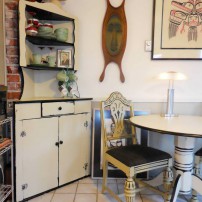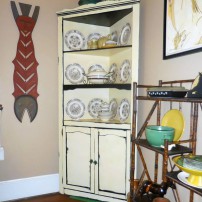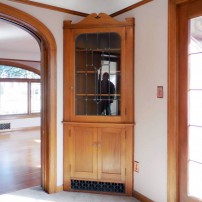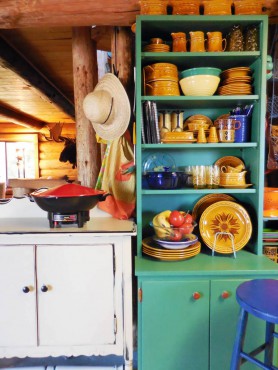 Corner hutch popularity is like a rollercoaster. A few years back, I professed the easy availability and need for these space-efficient cupboard/shelf units with one purpose — to hold “things.”
Corner hutch popularity is like a rollercoaster. A few years back, I professed the easy availability and need for these space-efficient cupboard/shelf units with one purpose — to hold “things.”
Repeating over and over that they are easy to find, easy to repair and easy to paint, and the corner format fits in a zillion places.
There were a lot of corner hutches out there in the secondhand market back then, as they were being discarded due to new minimalist design standards, seniors downsizing from the family farmhouse and young professionals preferring city life, with small, affordable living abodes and knickknacks in general not so fashionable.
The new homes these days have large, open floor plans with fewer division walls — thus less accommodating wall space for placing corner hutches or flat hutches.
For many years, I have been actively involved with utilizing space: remodeling old houses, redesigning apartments, decorating commercial display windows, hanging large art exhibits and, most recently, advising young homemakers on how to best utilize kitchen and dining room areas.
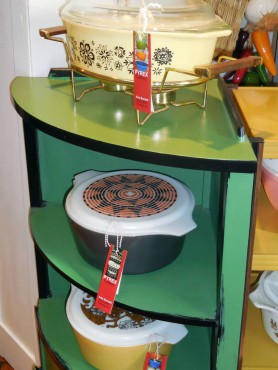 I can’t tell you how many folks have come into my art gallery wanting to know where to sell art, furniture or household items. Either they had no more room, were downsizing or were financially strapped. And I can’t tell you how many times I heard the phrase, “The kids don’t want it.”
I can’t tell you how many folks have come into my art gallery wanting to know where to sell art, furniture or household items. Either they had no more room, were downsizing or were financially strapped. And I can’t tell you how many times I heard the phrase, “The kids don’t want it.”
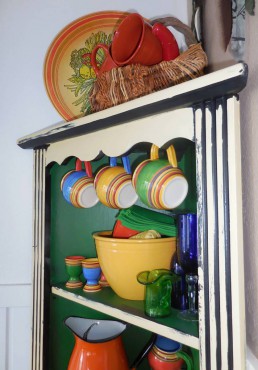 Recently there has been one big halt to the once-easy-find mobile corner hutches, and this seems to be nationwide. One of my Pyrex Museum & Amy Burnett Gallery online visitors from Anchorage, Alaska, said they’re harder to find than hen’s teeth. Another gal said that they are just not found anymore in Arizona.
Recently there has been one big halt to the once-easy-find mobile corner hutches, and this seems to be nationwide. One of my Pyrex Museum & Amy Burnett Gallery online visitors from Anchorage, Alaska, said they’re harder to find than hen’s teeth. Another gal said that they are just not found anymore in Arizona.
Deciding to accept the challenge, I grabbed my camera and headed out in the search for corner hutches or narrow, tall hutches, what some think of as convenient space-saving showcases.
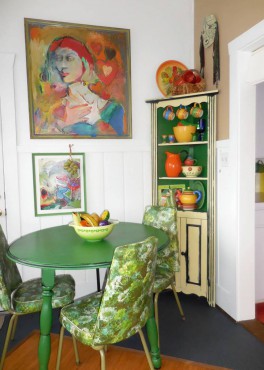 First stop, Bremerton’s Arnold’s Home Furnishings on Kitsap Way. In the past, the shop has always had answers for me. This time, I wanted to take a photo of a new corner hutch, of course assuming Arnold’s would have one. But it didn’t, not even in stock. The staff said there is little call for hutches of any kind.
First stop, Bremerton’s Arnold’s Home Furnishings on Kitsap Way. In the past, the shop has always had answers for me. This time, I wanted to take a photo of a new corner hutch, of course assuming Arnold’s would have one. But it didn’t, not even in stock. The staff said there is little call for hutches of any kind.
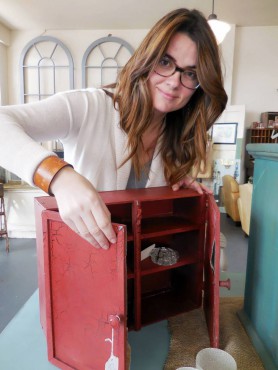 Next stop was one of the Habitat for Humanity retail outlets that deals primarily in construction supplies and larger pieces of used furniture. General manager George Aaro was encouraging, saying that they see a corner hutch steadily every couple of months or so, and they sell quickly. Aaro said they get a lot of corner pressed-board cupboard units and entertainment center units, and they don’t sell as fast.
Next stop was one of the Habitat for Humanity retail outlets that deals primarily in construction supplies and larger pieces of used furniture. General manager George Aaro was encouraging, saying that they see a corner hutch steadily every couple of months or so, and they sell quickly. Aaro said they get a lot of corner pressed-board cupboard units and entertainment center units, and they don’t sell as fast.
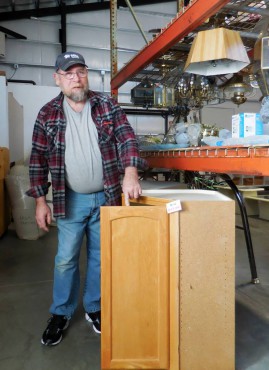 I called a friend who refurbishes, repurposes and shabby-chics old furniture and consigns with Uptown Mercantile on Pacific Avenue in Bremerton. Being that he hits a lot of rummage sales, he would have an idea of what folks are discarding. “Can’t find them, one corner hutch last year,” he said.
I called a friend who refurbishes, repurposes and shabby-chics old furniture and consigns with Uptown Mercantile on Pacific Avenue in Bremerton. Being that he hits a lot of rummage sales, he would have an idea of what folks are discarding. “Can’t find them, one corner hutch last year,” he said.
Next stop was an all-around thrift shop and one of my favorite charitable organizations that assists seniors in need, Faith in Action in Belfair. Assistant Manager Debra Shafer said that they get a lot of furniture donations, sometimes cabinets, but in recent years never corner hutches.
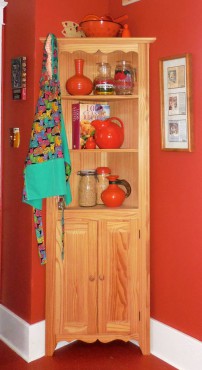 What was once easy to find, not so much any more, and that says something. They are being used — by senior downsizers who still want to hang onto “things” and young homemakers who are finding merit in kitchen items that hold family memories. And they relish a cabinet that takes little space and holds and exhibits “things.”
What was once easy to find, not so much any more, and that says something. They are being used — by senior downsizers who still want to hang onto “things” and young homemakers who are finding merit in kitchen items that hold family memories. And they relish a cabinet that takes little space and holds and exhibits “things.”
I couldn’t resist the invitation to go into some of those homes and share what has been done with corner hutches and tall, narrow shelf units.
The shape itself is fun and inviting. There are no sharp corners. It is as if there is a soft blend onto the opposing sides. From a formal design definition, a corner deviation keeps the viewer contently within the arena.
One house visit was very dramatic, as realtor Mark Danielson opened and let me tour the 1936 Braman home on Sixth Street next to the Norm Dicks Government Center. Some call it the Castle House. Empty now, the home had its original intent disrupted by previous commercial use, but one corner hutch was there. When the home was built, there were two, but one was removed as interior walls were arranged.
The “corner hutch” journey has been very interesting, and I am so in love with this living-area design element. A good design feeling where one can put “things.”




